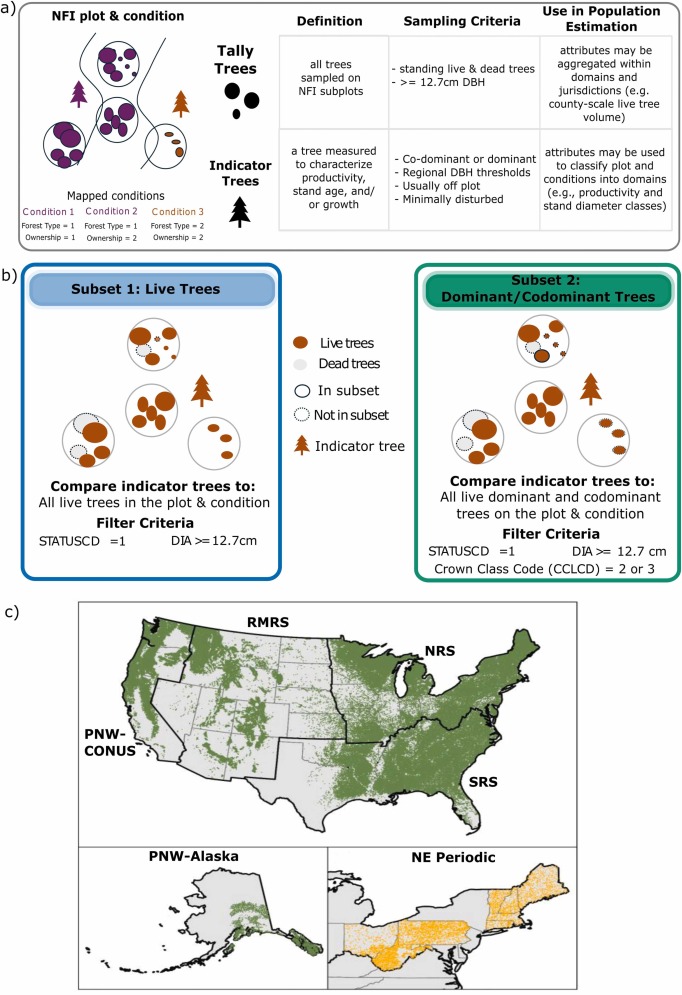New manuscript out in Forest Ecology and Management
Check out our recent publication in Forest Ecology and Management titled: “An assessment of the selection criteria, roles, and representativeness of indicator trees in the nationwide forest inventory of the United States.”
In forest inventories, “indicator” trees are often selected to represent particular forest attributes and other environmental conditions (e.g. site productivity, stand age, and growth rates). Tree cores and other attributes from these trees are traditionally used to estimate stand classifiers (site index, stand age classes) that are used in analysis and reporting. However, attributes from these trees (e.g., tree cores, stand age estimates) are increasingly used in novel contexts; For example, tree ring growth from the US National Forest Inventory (NFI) indicator tree core collections have been used for climate reconstruction (DeRose et al. 2012 and DeRose et al. 2013), quantifying localized responses to annual climate variability (Canham et al. 2018), quantifying differences in temporal and spatial climate-growth responses that indicate transient risks of population growth declines Evans, Dey, Heilman et al. 2024), and development of climate-sensitive growth models to forecast annual climate responses in the interior west (Klesse et al. 2020, Giebink et al. 2022, and Heilman et al. 2022)
My current lines of research combine tree growth from indicator trees in the western US (see our work on ponderosa pine and pinyon pine) and eastern US to develop growth models that can be applied to all NFI tally trees for stand-level biomass and carbon estimation.
With the increasing use of NFI data (especially in novel contexts), it is important to understand the original intent for data collection, how the data were collected, and potential limits that might impact the efficacy of the data in new contexts.
Given that our models rely heavily on these data, we wanted to know more about how selection criteria may affect our inference. In this manuscript, we first document regional differences in indicator tree selection criteria in the US NFI (see the Table S1 that Courtney aggregated by combing through field manuals!). We then compares indicator tree attributes (diameter, height, species, growth rate) to two subsets of trees: all live tally trees on the plot, and those that match selection criteria (i.e., co-dominant/dominant trees).
At the plot or forest condition-level, indicator tree and tally tree attributes are rarely equivalent. However, when averaged across regions of the US, the differences between indicator tree and tally tree attributes are often close to or centered around zero, suggesting that indicator trees may represent population-level tree attributes for dominant and co-dominant trees.
Citation: Giebink, C.L.*, Heilman, K.A.*, Cahoon, S.M.P., Domke, G.M. An assessment of the selection criteria, roles, and representativeness of indicator trees in the nationwide forest inventory of the United States. 2025. Forest Ecology and Management. https://doi.org/10.1016/j.foreco.2025.123200.
*This was co-led by myself and Courtney L. Giebink.
Check out figure 1: Conceptual overview of US NFI plot design and the definitions of tally trees and indicator trees.

This work was published as a part of a special issue titled: “Advancing forest inventory science for enhanced insights into tomorrow’s forests,” which has some great manuscripts using the US national forest inventory data.